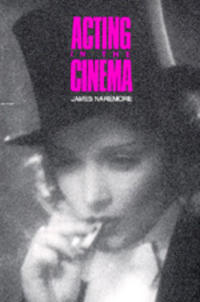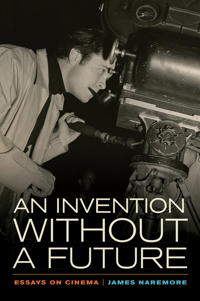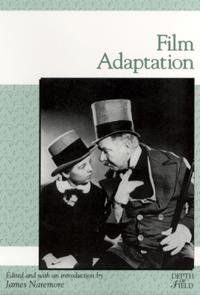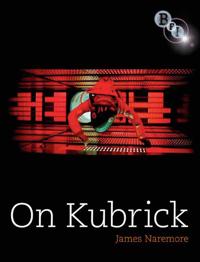More Than Night: Film Noir in Its Contexts (Pocket)
avNaremore, James
ISBN: 9780520254022 - UTGIVEN: 2008-01-14"Film noir" evokes memories of stylish, cynical, black-and-white movies from the 1940s and '50s--melodramas about private eyes, femmes fatales, criminal gangs, and lovers on the run. James Naremore's prize-winning book discusses these pictures, but also shows that the central term is more complex an[...]
Orson Welles's "Citizen Kane" (Häftad)
avJames Naremore
ISBN: 9780195158922 - UTGIVEN: 2004-08Citizen Kane is arguably the most admired and significant film since the advent of talking pictures. No other film is quite so interesting from both artistic and political points of view. To study it even briefly is to learn a great deal about American history, motion-picture style, and the literary[...]
Acting in the Cinema (Häftad)
avJames Naremore
ISBN: 9780520071940 - UTGIVEN: 199008In this richly detailed study, James Naremore focuses on the work of film acting, showing what players contribute to movies. Ranging from the earliest short subjects of Charles Chaplin to the contemporary features of Robert DeNiro, he develops a useful means of analyzing performance in the age of me[...]
Invention without a Future, An: Essays on Cinema (Inbunden)
avJames Naremore
ISBN: 9780520279735 - UTGIVEN: 2014-03-07An Invention without a Future (Pocket)
avJames Naremore
ISBN: 9780520279742 - UTGIVEN: 2014-01In 1895, Louis Lumiere supposedly said that cinema is "an invention without a future." James Naremore uses this legendary remark as a starting point for a meditation on the so-called death of cinema in the digital age, and as a way of introducing a wide-ranging series of his essays on movies past an[...]
Film Adaptation (Häftad)
avJames Naremore
ISBN: 9780813528144 - UTGIVEN: 2000-04Some of the earliest feature films were derived from classic literature. Even today, most of the movies we see are adaptations of one kind or another. People who have never read Jane Austen can see her characters on the screen; but filmgoers can also see material taken from theater, television, comi[...]
On Kubrick (Pocket)
avJames Naremore
ISBN: 9781844571420 - UTGIVEN: 2007-08"On Kubrick" is a critical study of Stanley Kubrick's career, beginning with his earliest feature, "Fear and Desire" (1953), and ending with his posthumous production of "A.I., Artificial Intelligence" (2001). Organized in six parts ('The Taste Machine', 'Young Kubrick', 'Kubrick, Harris, Douglas', [...]










